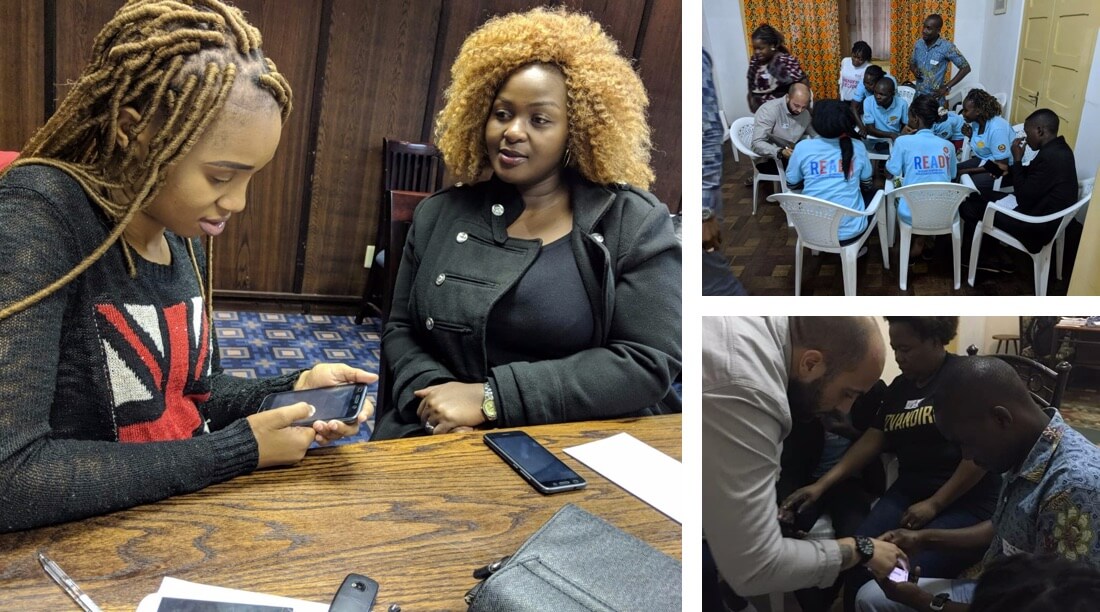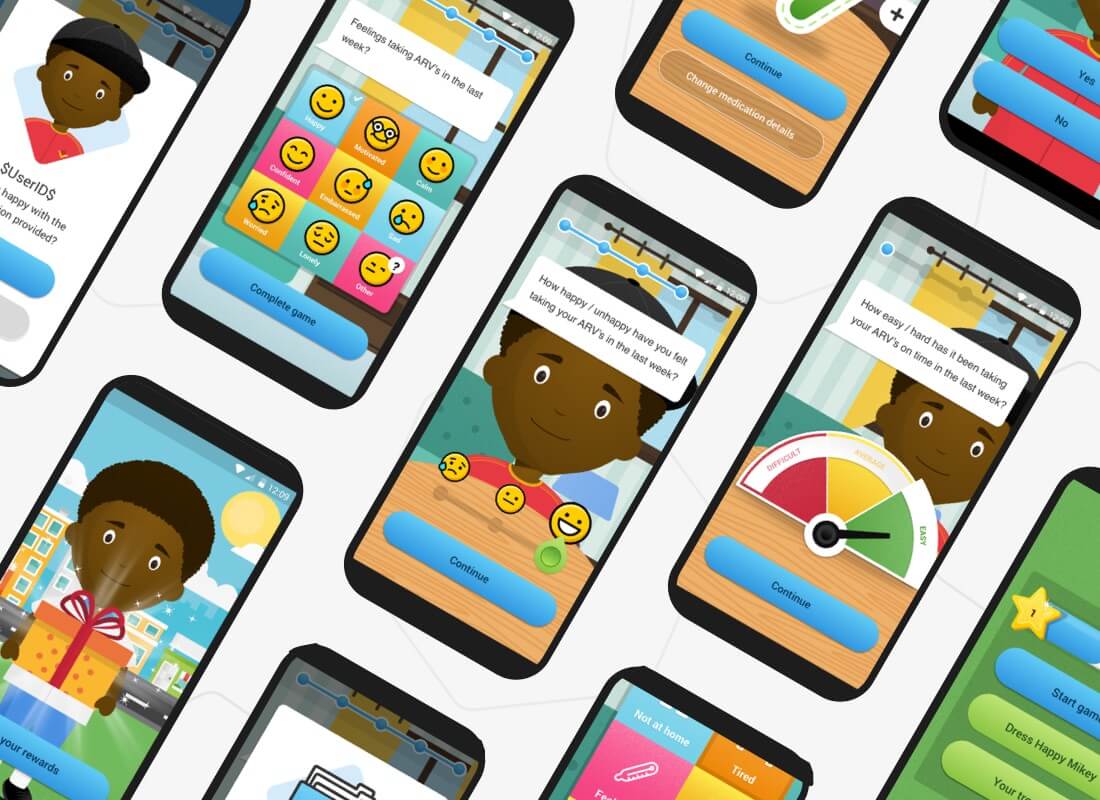Understanding the problem
The increasing numbers of young people living with HIV in developing countries is a global world health issue that governments are trying to address. Currently over 30% of all new cases of HIV are estimated to occur among young people aged 15 to 25. Also, increasingly, children are still being born with HIV. If we look at the number behind the statistics, this means there are 5 million young people living with HIV (WHO).
Over an enlightening fortnight in Mozambique and Swaziland (now ESwatini) we learned about how young people are supporting their peers (beneficiaries) through a pioneering intervention and the support they all need to ensure that young people living with HIV stay healthy. We also discovered the limitations of launching a digital project in an environment where electricity and a stable Internet connection are not a given.

Target audience & strategy
The obvious issue was the lack of technology and infrastructure present in the test countries; no beneficiaries had their own mobile phone or a computer, instead sharing a ‘family’ phone among extended families. Due to this there was a limited knowledge of ‘standard’ design patterns and we needed to find a key situation where we could harness technology to reach our audience.
The key situation we identified was the importance of the relationship the between the Community Adolescent Treatment Supporters (CATS) and their beneficiaries. For most of the beneficiaries this was their one opportunity to talk openly about some of the challenges of living with HIV; many do not disclose that they are living with HIV to their friends and family members due to the stigma and discrimination around HIV.
The current method of knowing if somebody was taking their medication regularly (treatment adherence) was manual (counting pills), which made validity and reliability of data collection difficult to track and provides no context. We knew this situation was something we could radically improve.
Through multiple design sprints we proposed an engaging, digital tool to support CATS in their day-to-day interaction with beneficiaries that would:
- Record and track beneficiary adherence, medication type and frequency over time
- Reward adherence success (in the game)
- Open up a dialogue around adherence, challenges and mood
- Collect and display all data within a dashboard to learn trends to better understand the complex issues of adherence
- Improve CATS efficiency and effectiveness of their role
- Be scalable for different languages and regions
- Be a solution that functions well in a market with lower technical proficiency, infrastructure and dated technological hardware

Implementation & creativity
Throughout the research phase it was clear that the product would need to be user-centric and tested as often and robustly as possible.
We started the product creation with a design sprint. One of the key areas that we needed to address was the importance of building user progression and light gamification mechanics into the product. This should ensure beneficiary retention and lift the solution from being a simple data-recording app.

Results & evaluation
As 2019 begins, we’re about to enter phase 2 of the project bringing exciting new changes and additional features to the app. During the pilot we recorded over 400 sessions between CATS and beneficiaries, with over 60 beneficiaries taking part across two countries
Award Winning
At the 2019 Northern Digital Awards MadeByPi, M&C Saatchi World Services & The International HIV and AIDS Alliance received the Best App award for Ready+
The campaign was really well researched and displayed great knowledge of the target audience. The app works on multiple levels to overcome a range of challenges and provides clear benefits for the user.
Judges Comments, Northern Digital Awards 2019
Usage statistics
-
56%
of CATS found the app made their job a lot easier
-
78%
found the app improved Beneficiary meetings a lot
-
60%
of CATS used the app for the full length of the pilot
